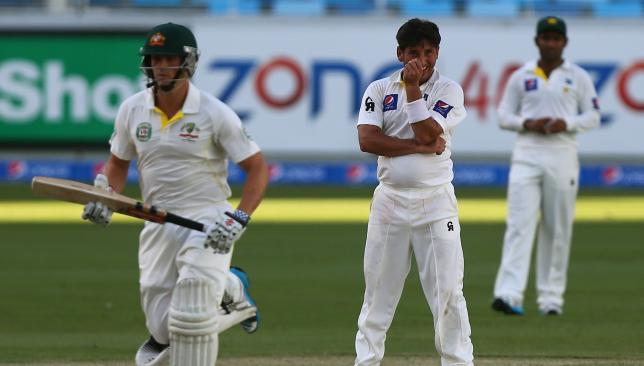
The focus of the cricketing world has been on the escalating tension between India and the West Indies after the latter pulled out of their subcontinent tour midway.
Fans all around the world are busy calculating the ramifications of an imminent reaction from the Indian cricket board which will surely cripple Caribbean cricket financially.
While the West Indies and India were busy fighting on and off the field, an interesting development had been quietly unfolding around the cricketing world. It started with the Aussies blooding in leg-spinner Cameron Boyce against Pakistan in the one-off Twenty20 match in Dubai.
Pakistan responded by unleashing their own leggie in the first Test in the form of Yasir Shah. The Indians too had young chinaman bowler Kuldeep Yadav in their squad for the series against West Indies but he didn’t get a chance to showcase his talent.
In a short span of time, the world got to see, or at least know about, some exciting young wrist spinners. Boyce had Pakistan in all kinds of trouble in the T20 match, returning spectacular figures of 2-10 from four overs and tying down the batsmen with some accurate bowling.
For Pakistan, Shah was simply superb in the first Test in Dubai, picking up seven wickets on his debut as Australia crumbled to a 221-run defeat.
While Yadav didn’t get to make his international debut, he showed why he is seen as a future star by excelling with the bat and ball in the domestic Duleep Trophy match for his Central Zone side.
In the semi-final against North Zone, Yadav picked up 3-94 in the only innings he bowled and scored 21 and 56, the second knock crucial in helping his side draw the match and enter the final.
These aren’t random developments. Wrist spin is witnessing a revival in international cricket. And the reason for that is people have stopped pursuing their Shane Warnes and are beginning to make do with their Anil Kumbles and Shahid Afridis.
Those assessing wrist spinners, mainly leggies, have realised that very few will ever be able to spin it a mile like Warne or have six different variations. So, they are picking the ones who can keep it simple – give it a rip, attack the stumps and give nothing away.
If we look at teams other than the ones mentioned, almost all of them have wrist spinners. West Indies have an attacking bowler in Samuel Badree, who has troubledbatsmen in T20s by picking up 31 wickets from 22 matches at an astonishing economy of 5.39.

New Zealand have high hopes of 21-year-old leggie Ish Sodhi and he too is in the Afridi/Kumble mould – attack the stumps and let the batsman make the mistake.
Sri Lanka have Seekuge Prasanna intheir line-up and he has had a decent start to his international career, picking up 14wickets in as many ODIs at an economy of 4.76.
South Africa, not renowned for their wrist spinners, have Imran Tahir, who is an established member of their squad. Hewas onsong against New Zealand, picking up his second straight two-wicket haul that helped his side seal the ODI series.
Also, Bangladesh picked their first leg-spinner for a Test in the form of young Jubair Hossain as they played Zimbabwe, which is more good news for fans of the art.
The wrist spinners we now have are different from the ones of the previous century. Turning it a foot and a half across the face of the bat looks good on TV but doesn’t always result in wickets. Which is why in his pursuit of finding success in India after failed attempts in 1998 and 2001, Warne resorted to having fielders on the leg side and attacking the stumps without turning the ball a mile. The result – Australia won the 2004-05 Test series in India 2-1.
Teams have found that it’s very difficult to attack accurate wrist spinners as they now tend to hit the stumps or pads a lot more when the batsman misses. Off-spinners don’t have that advantage.

When offie Nathan Lyon was turning the ball square against Pakistan at the end of the opening day of the Dubai Test, the batsmen kept sweeping and missing but not one wicket fell. But when the Aussies began to miss the line against Shah on Saturday, he snared two lbw dismissals in a short space of time.
Traditional finger spinners are being easily carted all over the park, especially in limited overs games. But wrist spinners, even if they don’t have many variations or turn the ball big, are being treated with a lot more respect.
With batsmen attacking a lot more now and their fundamentals weakened by the proliferation of Twenty20 cricket, the wrist spinner has become that much more difficult to negotiate. And even half decent ones are making the batsmen dance to their tune.
Leg spin, or wrist spin, is deemed too difficult an art to master. Therefore very few had the courage to take a chance with such bowlers earlier. But the situation has now changed. And one feels that every team will develop leggies, or chinaman bowlers, and give them a lot more opportunities.